CA6140普通车床后托架【831001】零件的机械加工工艺规程及工艺装备设计【镗孔Φ40、Φ30.2、Φ25.5孔】
后托架的机械加工工艺及工艺装备设计
CA6140机床后托架的机械加工工艺及夹具设计
CA6140机床后托架的机械加工工艺及工艺装备设计
基于普通机床的后托架及【831001】的机械加工工艺规程及【镗孔Φ40、Φ30.2、Φ25.5孔】夹具的设计开发
CA6140车床后托架加工工艺及夹具设计
CA6140机床后托架【831001】的机械加工工艺及【镗孔Φ40、Φ30.2、Φ25.5孔】夹具设计
CA6140机床后托架【831001】的机械加工工艺及夹具设计【铣底平面】【镗孔Φ40、Φ30.2、Φ25.5孔】【钻顶面四孔】
CA6140机床后托架的加工工艺编制及夹具设计【铣底平面】【镗孔Φ40、Φ30.2、Φ25.5孔】
后托架【831001】零件的加工工艺及镗三杠孔夹具设计
CA6140车床后托架【831001】的机械加工工艺规程及工艺装备设计【铣底平面】【钻三杠孔Φ40、Φ30.2、Φ25.5孔】【钻底孔φ13 、φ20、φ10 孔】【优秀】【夹具类】【带UG三维零件图】【3张CAD图纸全套】【HTJ011】
【带工艺过程、卡片】【带任务书+自检表+开题报告】【40页@正文12700字】【详情如下】【需要咨询购买全套设计请加QQ1459919609 】
任务书.doc
加工三杠孔钻床夹具装配图.dwg
外语文献翻译.doc
外语翻译.doc
夹具装配图及零件图.dwg
工艺卡片.dwg
开题报告.doc
自检表.doc
说明书.doc
钻三杠孔夹具体.dwg
钻孔夹具.dwg
钻底孔夹具体.dwg
铣底面夹具体.dwg
铣底面夹具装配图.dwg
零件图.dwg
任务书
1.毕业设计(论文)题目:CA6140机床后托架加工工艺及夹具设计
2.学生完成全部任务期限: 2006 年 6 月 9 日
3.任务要求:(1)、设计内容:制订年产5000台CA6140机床后托架的加工工艺;
(2)、设计主视图中的三孔的加工夹具;
(3)、设计铣底面的夹具;
(4)、设计俯视图中4孔的加工夹具;
(5)、提交夹具装配图、零件图、加工工艺卡片、设计说明书及精度分析等相关设计分析结果。
注意:多人做一题时,设计方案、内容不能相同
4.实验(调验)部分内容要求:
(1)、查阅相关资料,分析所给题目的零件结构工艺性,编排出该零件的合理的加工工艺过程,选择各加工工序的合理的切削用量,计算各工序的定额,填写零件的加工工艺卡片;
(2)、完成给定加工面的夹具设计(须有方案分析比较、优选),每套夹具须完成装配图1张,夹具主要零、部件2-3张;
(3)、编写夹具的设计说明书,字数在15000字以上。
5.文献查阅及翻译要求:
(1)、机械加工工艺人员手册;
(2)、机床家具设计手册;
(3)、机床夹具图册;
(4)、翻译有关机械制造方面10000个字符以上的外文资料,字数不得少于三千。
摘 要
机械加工工艺是实现产品设计,保证产品质量,节约能源,降低消耗的重要手段。本课题研究CA6140车床后托架加工工艺规程。首先通过对零件图的分析,了解工件的结构形式,明确了具体的技术要求,从而对工件各组成表面选择合适的加工方法。再拟订较为合理的工艺规程,充分体现质量、生产率和经济性的统一。
机床夹具设计是工艺装备设计中的一个重要组成部分,在整个机械加工过程中,夹具除了夹紧、固定被加工零件外,还要求保证加工零件的位置精度、提高加工生产率。
本课题在设计的过程当中,深入生产实际,进行调查研究,吸取国内外先进技术,制定出合理的设计方案,在进行具体设计。
关键词 产品设计,后托架,加工工艺,夹具
ABSTRACT
He machine-finishing craft realizes the product design, guaranteed the product quality, saves the energy, reduces the consumption the important method. After this topic studies the CA6140 lathe the bracket processing technological process. First through to the detail drawing analysis, understood the work piece the structural style, has been clear about the concrete specification, thus to work piece each composition surface choice appropriate processing method. Again drafts the more reasonable technological process, fully manifests the quality, the productivity and the efficient unification .
Engine bed jig design is in a craft equipment design important constituent, in the entire machine-finishing process, the jig except clamps, fixes is processed outside the components, but also requests guarantee processing components position precision, enhancement processing productivity .
This topic in the middle of the design process, penetrates the production reality, conducts the investigation and study, absorbs the domestic and foreign advanced technologies, formulates the reasonable design proposal, is carrying on the concrete design .
Keywords shift the product design,latter bracket ,processing craft,jig
目 录
摘 要 Ⅰ
ABSTRACTⅡ
1 CA6140车床后托架的加工工艺设计3
1.1 CA6140车床后托架的结构特点和技术要求3
1.2 CA6140车床后托架的材料、毛坯和热处理3
1.2.1 毛坯材料及热处理3
1.2.2 毛坯的结构确定4
1.3 工艺过程设计中应考虑的主要问题4
1.3.1 加工方法选择的原则4
1.3.2 加工阶段的划分4
1.3.3 工序的合理组合5
1.3.4 加工顺序的安排5
1.4 CA6140车床后托架的机械加工工艺过程分析5
1.4.1 CA6140车床后托架零件图分析5
1.4.2 CA6140车床后托架的加工工艺的路线7
1.5 CA6140车床后托架的工序设计12
1.5.1 工序基准的选择12
1.5.2 工序尺寸的确定12
1.5.3 加工余量的确定14
1.5.4 确定各工序的加工设备和工艺装备15
1.5.5 确定切削用量及工时定额16
2 专用夹具设计26
2.1 铣平面夹具设计26
2.1.1 研究原始质料26
2.1.2 定位基准的选择26
2.1.3 切削力及夹紧分析计算26
2.1.4 误差分析与计算27
2.1.5 夹具设计及操作的简要说明28
2.2 钻三杠孔夹具设计28
2.2.1 研究原始质料28
2.2.2 定位基准的选择29
2.2.3 切削力及夹紧力的计算29
2.2.4 误差分析与计算30
2.2.5 夹具设计及操作的简要说明31
2.3 钻底孔夹具设计31
2.3.1 研究原始质料31
2.3.2 定位基准的选择31
2.3.3 切削力及夹紧力的计算31
2.3.4 误差分析与计算32
2.3.5 夹具设计及操作的简要说明33
结 论34
参考文献35
致 谢36
1 CA6140车床后托架的加工工艺设计
机械加工工艺是实现产品设计,保证产品质量,节约能源,降低消耗的重要手段,是企业进行生产准备,计划调度,加工操作,安全生产,技术检测和健全劳动组织的重要依据,也是企业上品种,上质量,上水平,加速产品更新,提高经济效益的技术保证。
在实际生产中,由于零件的生产类型、材料、结构、形状、尺寸和技术要求等不同,针对某一零件,往往不是单独在一种机床上,用某一种加工方法就能完成的,而是要经过一定的工艺过程才能完成其加工。因此,不仅要根据零件的具体要求,结合现场的具体条件,对零件的各组成表面选择合适的加工方法,还要合理地安排加工顺序,逐步地把零件加工出来。
对于某个具体零件,可采用几种不同的工艺方案进行加工。虽然这些方案都可以加工出来合格的零件,但从生产效率和经济效益来看,可能其中有种方案比较合理且切实可行。因此,必须根据零件的具体要求和可能的加工条件等,拟订较为合理的工艺过程。
1.1 CA6140车床后托架的结构特点和技术要求
由零件图1-1可得:CA6140车床后托架是铸造件,从整体形状来看类似长方体。根据要求主要是加工孔和底平面。具体特点和技术要求如下:
① 精加工孔, , 要求达到的精度等级为。粗糙度为,且以底平面为基准,要求平行度公差为,主要满足加工孔的位置精度。
② 其他各个孔的加工都要以底平面为定位基准。所以,底平面的形位公差要达到设计要求。
③ 、粗糙度为;为锥孔,且粗糙度为。
④ 其余未注要求的加工表面为不去除材料加工。
1.2 CA6140车床后托架的材料、毛坯和热处理
1.2.1 毛坯材料及热处理
灰铸体一般的工作条件:
① 承受中等载荷的零件。
② 磨檫面间的单位面积压力不大于490KPa。
毛坯的热处理
灰铸铁(HT150)中的碳全部或大部分以片状石墨方式存在铸铁中,由于片状石墨对基体的割裂作用大,引起应力集中也大;因此,使石墨片得到细化,并改善石墨片的分布,可提高铸铁的性能。可采用石墨化退火,来消除铸铁表层和壁厚较薄的部位可能出现的白口组织(有大量的渗碳体出现),以便于切削加工。
1.2.2 毛坯的结构确定
毛坯的结构工艺要求
CA6140车床后托架为铸造件,对毛坯的结构工艺有一定要求:
① 铸件的壁厚应和合适,均匀,不得有突然变化。
② 铸造圆角要适当,不得有尖角。
③ 铸件结构要尽量简化,并要有和合理的起模斜度,以减少分型面、芯子、并便于起模。
④ 加强肋的厚度和分布要合理,以免冷却时铸件变形或产生裂纹。
⑤ 铸件的选材要合理,应有较好的可铸性。
毛坯形状、尺寸确定的要求
设计毛坯形状、尺寸还应考虑到:
① 各加工面的几何形状应尽量简单。
② 工艺基准以设计基准相一致。
③ 便于装夹、加工和检查。
④ 结构要素统一,尽量使用普通设备和标准刀具进行加工。
在确定毛坯时,要考虑经济性。虽然毛坯的形状尺寸与零件接近,可以减少加工余量,提高材料的利用率,降低加工成本,但这样可能导致毛坯制造困难,需要采用昂贵的毛坯制造设备,增加毛坯的制造成本。因此,毛坯的种类形状及尺寸的确定一定要考虑零件成本的问题但要保证零件的使用性能。在毛坯的种类
形状及尺寸确定后,必要时可据此绘出毛坯图。
1.3 工艺过程设计中应考虑的主要问题
1.3.1 加工方法选择的原则
① 所选加工方法应考虑每种加工方法的经济、精度要求相适应。
② 所选加工方法能确保加工面的几何形状精度,表面相互位置精度要求。
③ 所选加工方法要与零件材料的可加工性相适应。
④ 加工方法要与生产类型相适应。
⑤ 所选加工方法企业现有设备条件和工人技术水平相适应。
参考文献
[1] 孟少龙.机械加工工艺手册第1卷[M].北京:机械工业出版社,1991
[2] 李洪.机械加工工艺手册[M].北京:机械工业出版社,1990
[3]《金属机械加工工艺人员手册》修订组.金属机械加工工艺人员手册[M].上海:上海科学技术出版社,1997
[4] 于骏一.典型零件制造工艺[M].北京:机械工业出版社,1989
[5] 王季琨、沈中伟、刘锡珍.机械制造工艺学[M].天津:天津大学出版社,2004
[6] 莫雨松、李硕根等.互换性与技术测量[M].中国计量出版社,1988
[7] 方昆凡.公差与配合技术手册[M].北京:北京出版社,1984
[8] 马贤智.机械加工余量与公差手册[M].北京:中国标准出版社,1994
[9] 上海金属切削技术协会.金属切削手册[M].上海:上海科学技术出版社,1984
[10] 东北重型机械学院、洛阳农业机械学院、长春汽车厂工人大学.机床夹具设计手册[M].上海:上海科学技术出版社,1980
[11] 余光国、马俊、张兴发.机床夹具设计[M].重庆:重庆大学出版社,1995
[12] 东北重型机械学院等.机床夹具设计手册[M].上海:上海科学技术出版社,1979。
[13] 刘文剑、曹天河、赵维.夹具工程师手册[M].哈尔滨:黑龙江科学技术出版社,1987
[14] 贵州工学院机械制造工艺教研室.机床夹具结构图册[M].贵阳:贵州人民出版社,1983
[15] 孙已德.机床夹具图册[M].北京:机械工业出版社,1984
[16] 成大先.机械设计手册单行本连接与紧固[M].北京,化学工业出版社,2004

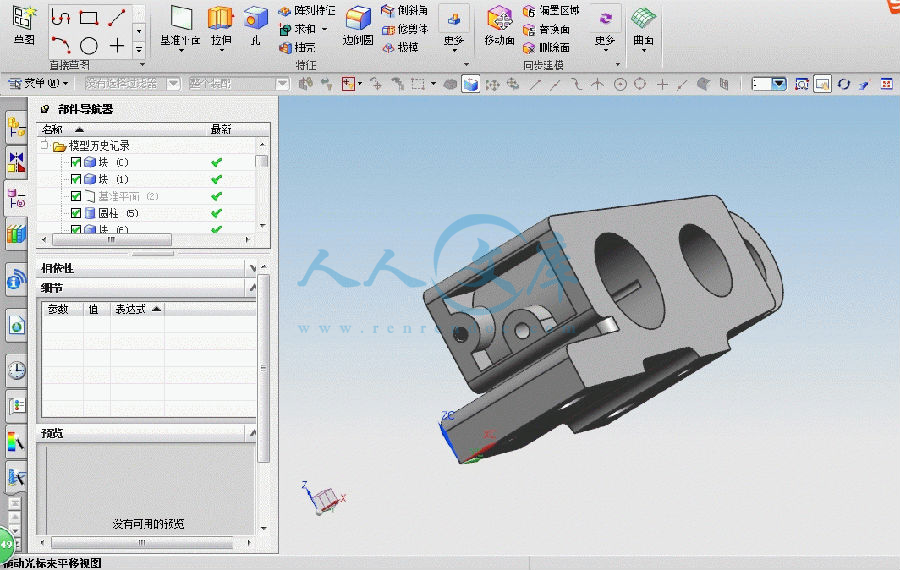

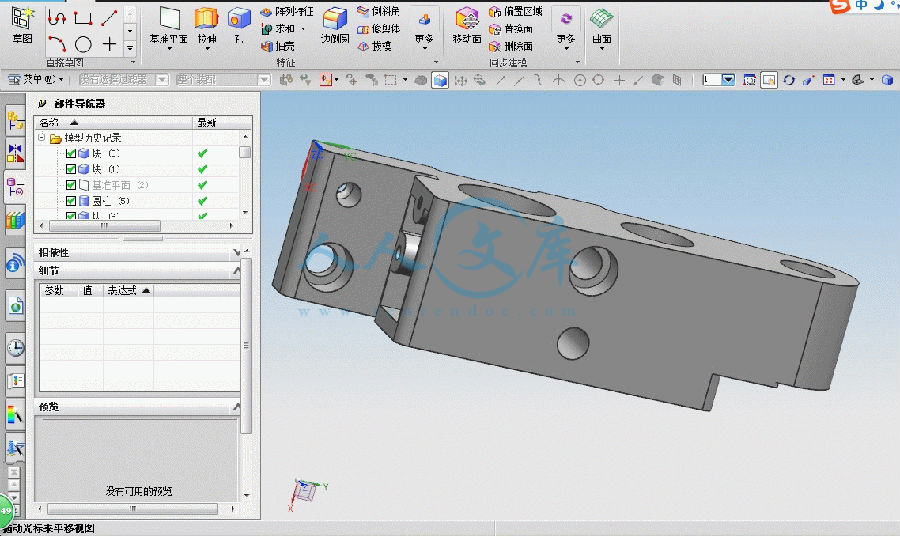
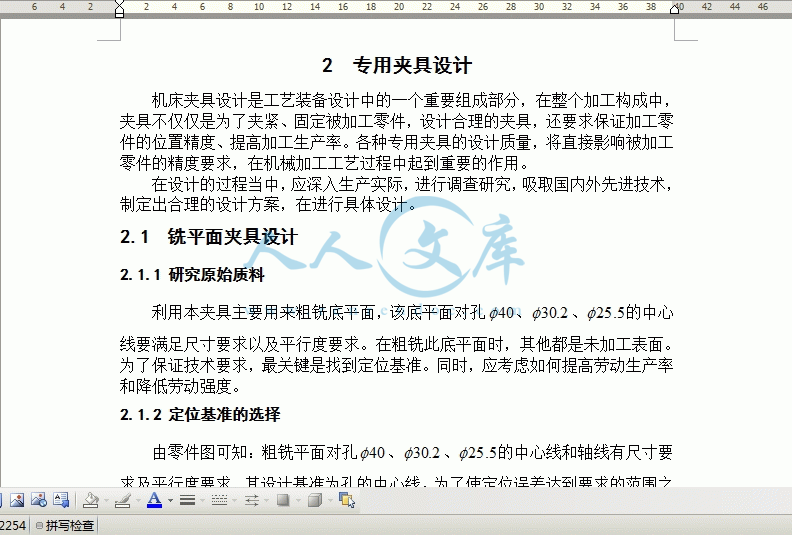
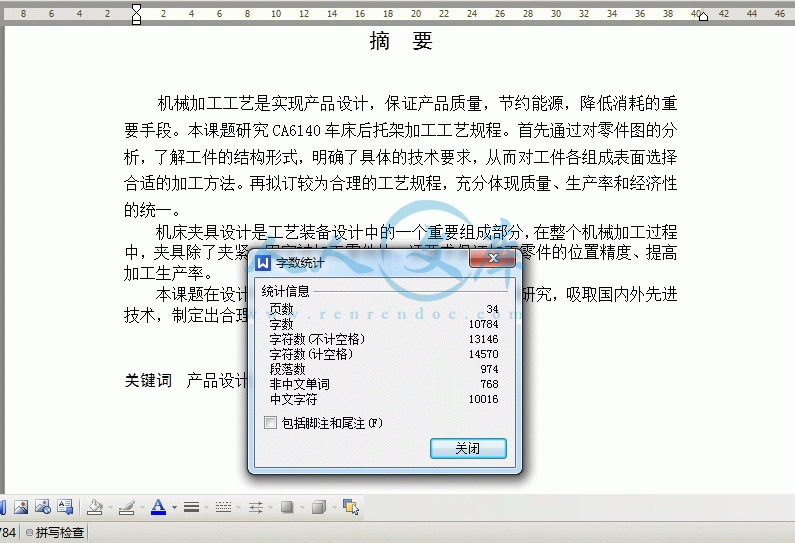


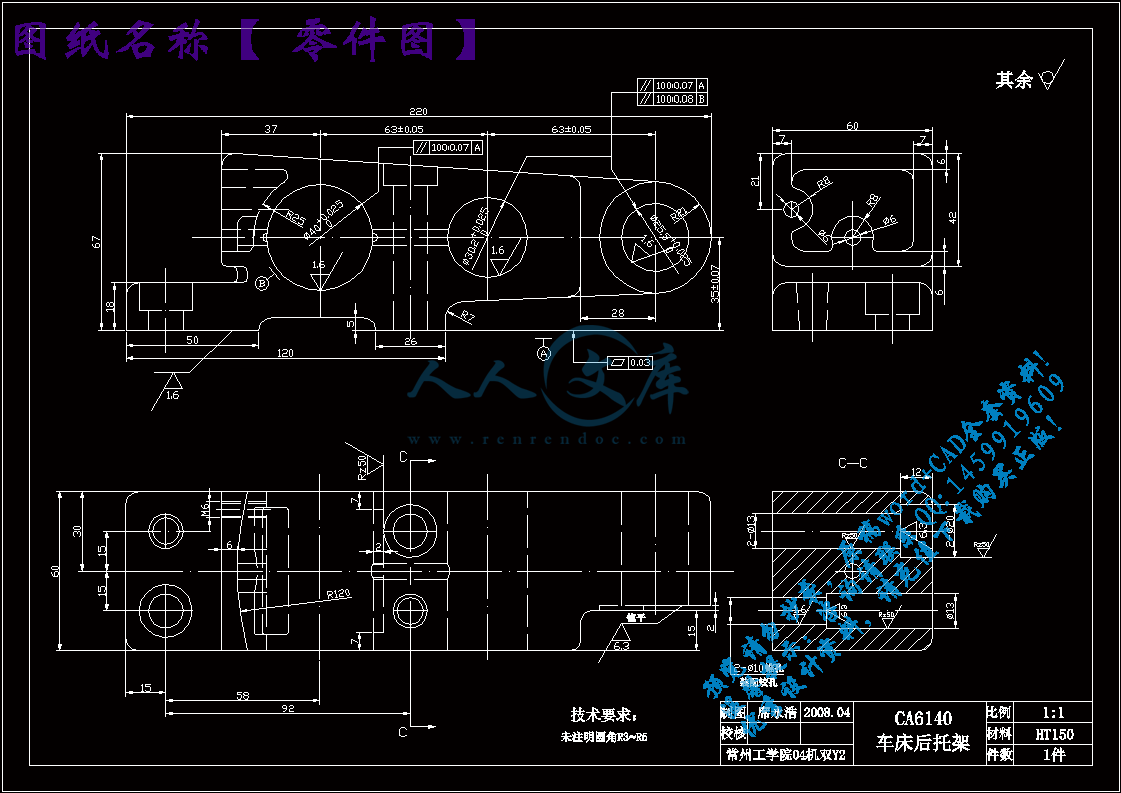
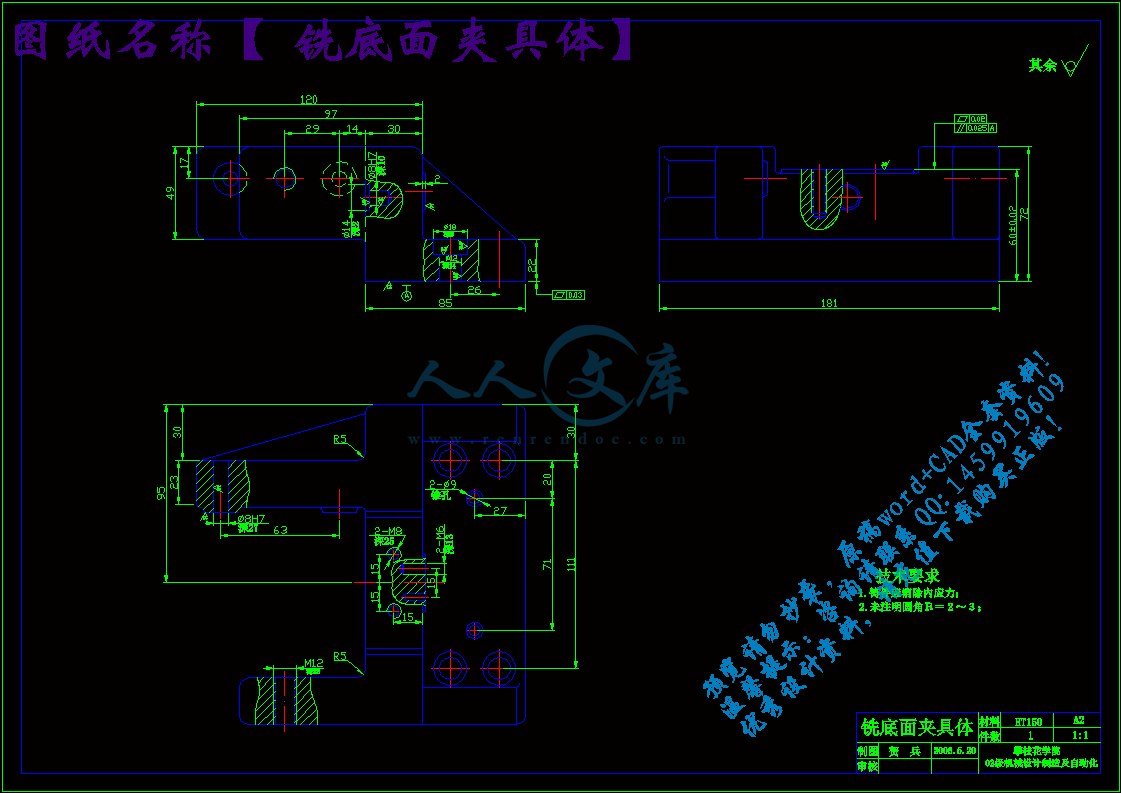

 川公网安备: 51019002004831号
川公网安备: 51019002004831号